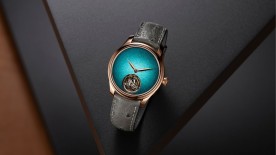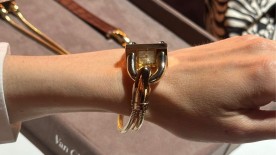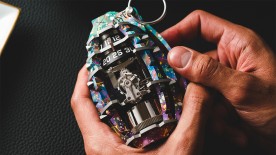For industry players, the challenge in terms of demand is twofold: to understand and satisfy the needs of existing customers, and to attract new segments whose potential has yet to be tapped, such as female customers and young buyers.
The potential of the women segment
The female customer base, less numerous than that of men, offers significant growth potential. And while brands are increasingly paying attention to this segment, there is still a gap in understanding their expectations in certain aspects. Indeed, even though they differ from those of their male counterparts, the tastes and needs of female customers have evolved. Women no longer want only gem-set, quartz and small-diameter watches.
In fact, according to the results of our study, technical features (such as complications, materials, movements, etc.) are an important criterion during the purchase process for 31% of women and 49% of men. 81% of women and 68% of men appreciate classic watches, 40% of women and 70% of men are fond of sports watches, and only 14% of women and 3% of men indicated a liking for set watches.
A better understanding of the differences and similarities between men's and women's expectations and moving away from the outdated gender interpretations in product design and communication, are and will be fundamental elements to master to reach female customers.
Young buyers are the future of the sector
By 2025, around 90% of luxury sector customers will be born after 1965, and 50% after 1980 (Xerfi, 2022). Generating interest among the new generations is thus crucial for any company wishing to sustain its activities over the long term. However, this new clientele appears to be demanding. Younger clients are less patient and no longer tolerate endless waiting times. They need more transparency from brands and wish to resell their watches according to their frequent changes in taste.
According to the data collected by our firm, smartwatches interest a similar number of younger and older buyers, contrary to popular belief. In fact, 24% of buyers under 36 and 23% of buyers aged 36 or older indicated owning a smartwatch. Additionally, a higher proportion of younger buyers purchase for investment reasons (34%) compared to buyers aged 36 or more (19%). Finally, the secondary market seems more attractive to young purchasers, as vintage watches appeal to a larger number of young people (49%) than older consumers (37%).
In short, successfully adapting to the needs, expectations and new acquisition habits of young people without betraying the brand's DNA will be the challenge of the coming years.
Sustainable development: today's challenge
The depletion of natural resources and climate change are increasingly alarming the planet. Although the primary concern of the luxury watchmaking sector is to enchant customers with exceptional products, it cannot escape the challenges of sustainability. Even though luxury watches are often presented as “sustainable” objects with a lifecycle spanning several decades, a lack of transparency persists regarding the origin and extraction conditions of raw materials. Furthermore, brands can strengthen their efforts in production and human resources management to contribute to a more responsible future.
Indeed, the luxury industry has an aspirational and exemplary role to play. Major watchmaking companies are under scrutiny, and thus must be beyond reproach. Additionally, the substantial margins in this sector provide the resources and capacity for brands to implement sustainability measures.
Moreover, buyers seem to be sensitive to this issue. Indeed, during the purchasing of a watch, sustainable development was rated as an important to extremely important criterion by two-thirds of buyers.

Facing up to challenges: a matter of strategy
Our study on the luxury watchmaking sector highlights many potential sources of development, but also several challenges. Beyond these observations, the analysis indicates that all elements are interconnected, and that the solution lies in developing a solid corporate strategy, a coherent set of operational strategies, and an efficient organization.
And this is no small feat. Whether or not to follow the trend and open mono-brand stores, with all the risks that entails, and to integrate the digital channel into this. Determining the most suitable business model for entering the secondary market. Attracting and retaining talent, while dealing with the constraints imposed by certain professions in the industry. Whether or not to increase production capacity in a decidedly unstable period. Or how to reach young and female customers without betraying the brand's DNA.
These are all choices to be made that will determine the long-term success of watchmaking companies, and to which we will attempt to provide insights in our study on this industry, a symbol of Swiss excellence and know-how.
Read the full study
In our comprehensive study, we address many other themes such as the industry's position on the challenges of certification, security, and digitalization, the identification of different categories of buyers, the expectations and opinions of over 400 watch purchasers, the results of a “mystery shopper” tour in nearly 30 mono-brand and multi-brand boutiques in Geneva, and the latest key market figures.
Read Part One
Read Part Two
Read Part Three
Discover the full Luxury Watchmaking Study, and for more info contact: info@mbdconsulting.ch






